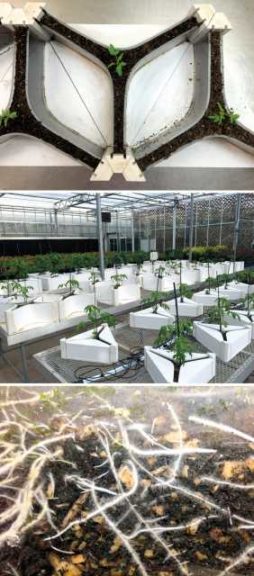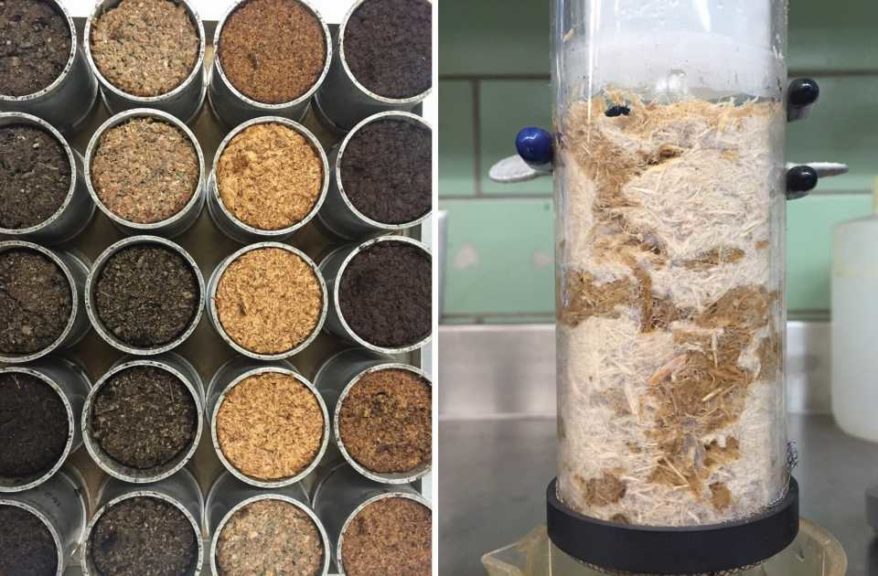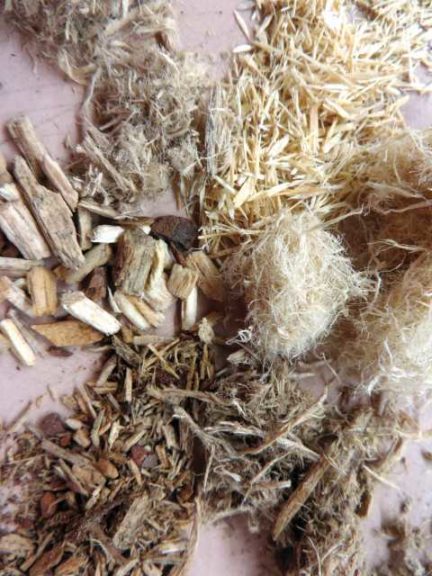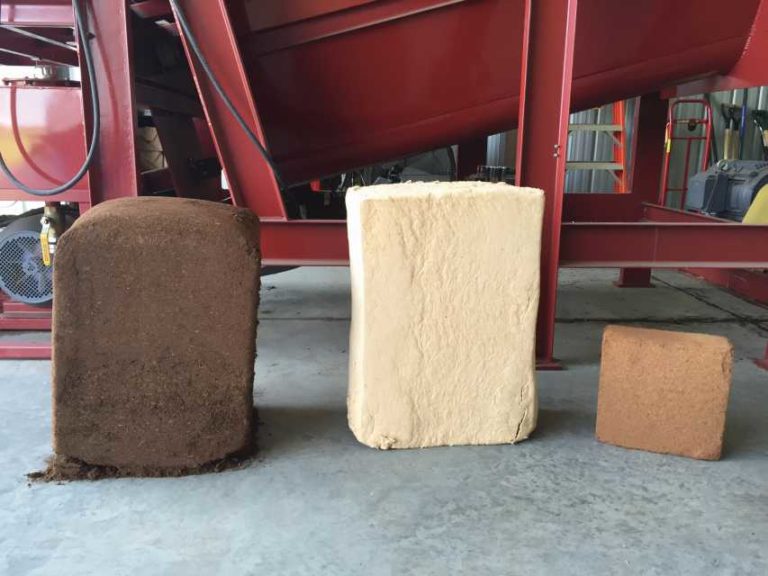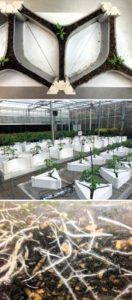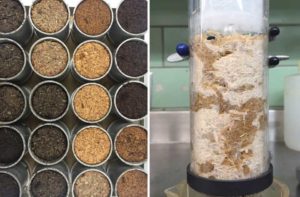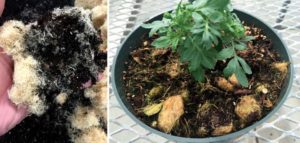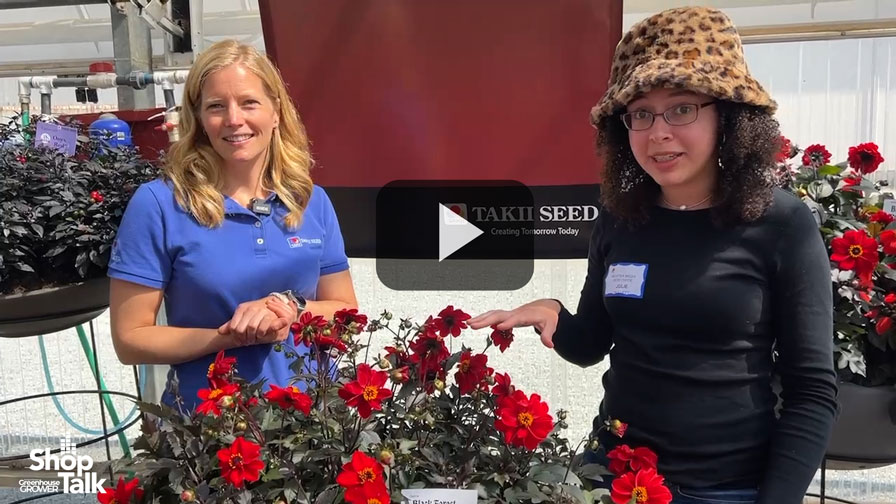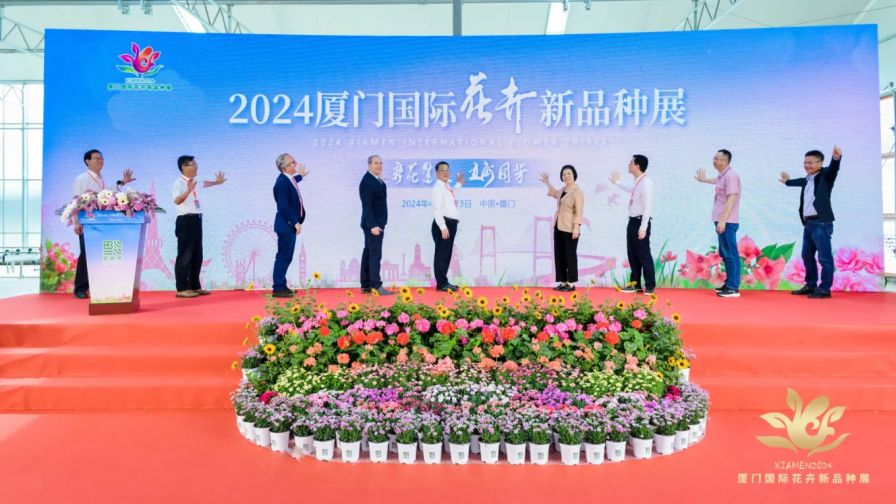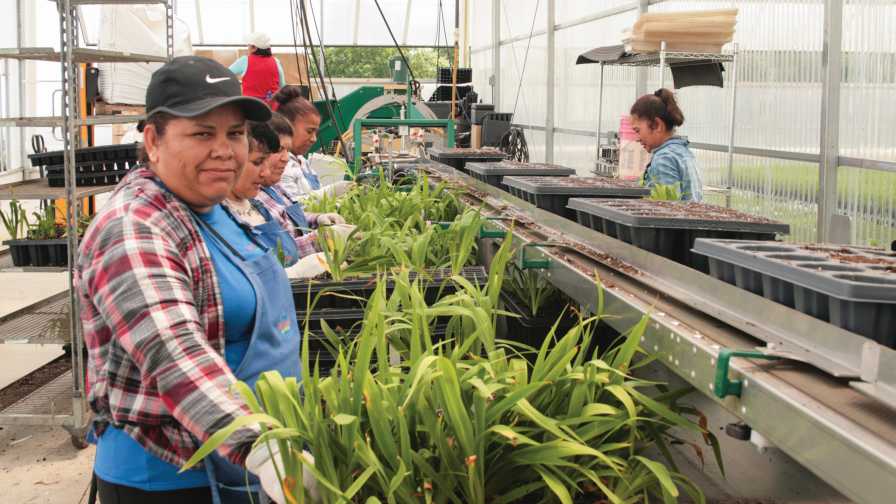The Evolution And Revolution Of Wood Substrates
We know that fiber in our diet is a great way to stay healthy. Maybe it is time to think of fiber additions to our container substrates in the same positive way. The use of wood fiber and other wood components in growing media dates back to the late ‘80s and early ‘90s when they were first developed and used in Europe. It wasn’t until 2004 that the idea crossed the pond and gained interest here in the U.S.
In the decade-plus since research began here in the U.S., numerous academic and industry research and development programs have evaluated various wood materials as potential alternatives to peat moss and perlite (greenhouse crops) and pine bark (nursery crops). As a recent example of the positive results, a trial was conducted at North Carolina State University (NC State) in 2015 evaluating numerous poinsettia cultivars in substrates amended with six different wood components. Other reports of large-scale plant growth trials have been reported in industry and Extension publications over the years.
One of the most impressive and consistent observations of many of these trials has been the vigorous (often enhanced) root growth of greenhouse and vegetable crops (Figure 1). Quickness to root either in the propagation phase of plant production or in the plug/cell pack phase could add significant benefits to any grower’s operation.
Not All Wood Components Are Equal
A series of articles in Greenhouse Grower in 2014 highlighted the construction of a specific wood component (loblolly pine wood chips) that was engineered as a substrate aggregate and used as a replacement for perlite (the most expensive substrate component by volume). These articles highlighted the lack of any changes to cultural production practices when pine chips were amended in a peat substrate at rates of 10%, 20%, or 30%, compared to the same rates of perlite. No differences were found in nitrogen use (fertility), liming practices, or plant growth regulator (PGR) efficacy/response.
The results from those studies cannot be applied or assumed for other wood substrate components. The finer and more different the wood particles are, the more variable they will be in relation to how they behave in a growing mix. Wood is not wood is not wood, just as peat is not peat is not peat. Variations exist with different products.
Over the past several years, many different wood components have been designed, engineered/processed, and evaluated, which has led to greatly furthering the potential of these materials in present-day growing media formulations. Research strategies have advanced significantly to develop the precise product development methodologies in practice today.
The Properties Of The Blended Mix Are What Counts
After researchers realized fresh (non-composted or aged) wood components were viable as alternative substrate materials, more technical assessments of chemical, physical, hydrological, and biological properties have been conducted.
The chemical properties of interest include pH, pH buffering capacity, electrical conductivity, phytotoxicity, carbon:nitrogen ratios, efficacy and/or tie-up of applied PGRs, etc. Physical properties of interest include particle size, particle shape, bulk density, air and water relations, total porosity, compaction potential, shrinkage, nesting potential, blending characteristics with peat and other materials, flowability of substrates containing wood fiber in potting and transplanting machines, etc.
Hydrological properties (Figure 2) of interest include initial hydration and water capture, available and unavailable water, rewettability, infiltration, percolation, and conductivity (especially with different irrigation systems in greenhouse crop production). Biological properties of interest include initial microbial populations, microbial nutrient immobilization (and its potential to negatively influence crop production fertility practices), disease interactions (Phythium, Rhizoctonia, etc.), and insect occurence (e.g., fungus gnats).
Any one of these properties could vary with different wood components that have different shapes, sizes, origination from different tree species, have been aged/stored, dried or not dried, etc. The properties of the substrate components by themselves are not as important as the properties achieved after blending various components together into the final mix.
Every Substrate Blend Is Unique
Much of the current research and development focus is on engineering principles to better address consistency and reproducibility concerns and opportunities. As part of the engineering research at NC State, we work with various types of equipment to process harvested trees, including tree chippers and grinders, as well as various machines to further grind/pulverize the wood feedstock material, like hammer mills, knife-ring flakers, disc refiners, and extruders (Figure 3).
Understanding the variables and variations on how these different machines create different end-products is very important. All wood components are not the same. Every substrate component that is processed in different ways is a unique material. The physical characteristics of any wood component will directly influence the properties of any substrate. Some materials are engineered to be blockular aggregates whose incorporation would be for purposes similar to perlite, as previously discussed. Other, more fibrous materials will have properties similar to peat moss. This means that different wood components blended with peat at the same percentages will have/yield very different products.
One of the current commercial wood fiber producing companies (which produces a true fiber-like consistent material) is compressing its product into bales similar to peat and coconut coir (Figure 4). These bales increase transportation efficiency and cost and allow for easy storage on-site at the manufacturer or the grower facility.
Like peat and coir, specialized equipment is needed for fluffing and reconstituting these bales (each yields close to 1 cubic yard of fiber) before being mixed with peat or other materials. The blending of a fine wood fiber can also present some challenges that need to be, and can be addressed. Due to the physical nature of loose wood fiber, it takes specialized equipment to properly mix it into peat, regardless of the percentage of incorporation. Improper blending can create undesirable balling and clumping that can influence the physical properties of the mix (Figure 5).
Volume ratios may also be different when blending wood materials (fiber or chips) into peat, meaning 1 cubic yard of peat blended with 1 cubic yard of wood fiber likely will not yield 2 cubic yards of mix. The difference in the product densities and particle structures can lessen the volume of the final mixed product, so consider that when assessing the cost savings potential of using wood materials and when determining substrate volume needs and inventory calculations.
Growers May Be Cultivating Pine Trees For Greenhouse Substrate Production
Despite the traditional uses (pulp, paper, timber, fuel, etc.) and more recent uses (wood pellets, biofuels, etc.) of pine trees in the U.S., it is still believed that pine wood is a reliable source of sustainable greenhouse substrate components in the foreseeable future.
Today there are commercial substrate companies currently producing high quality, consistent, bulk wood fiber substrate components for growers. The Southeastern U.S. is one of the most abundant wood producing regions in the entire world and production (acreage) continues to be more productive thanks to innovations in tree genetics and silviculture practices.
It has been proposed that a grower, consortium of growers, substrate manufacturer(s), or other private entrepreneurs could plant pine trees for the specific purpose of growing them for use in horticultural substrates. Since the ideal tree age for processing is between 12 to 14 years (depending on planting density, soil type, fertility, etc.), the turnover in acreage would be relatively quick. It is unknown at this time how much of a wood component could be produced from an acre of land planted dense enough to be uniformly harvested at one time.




